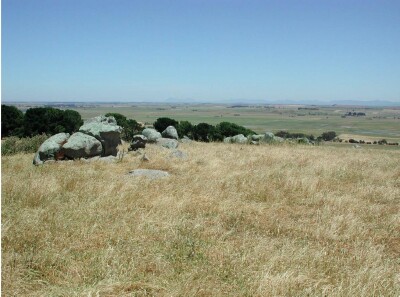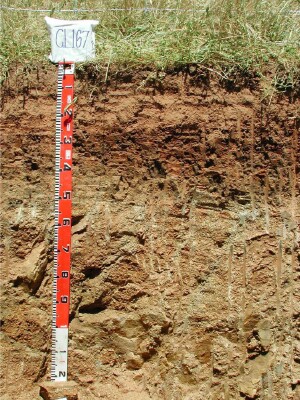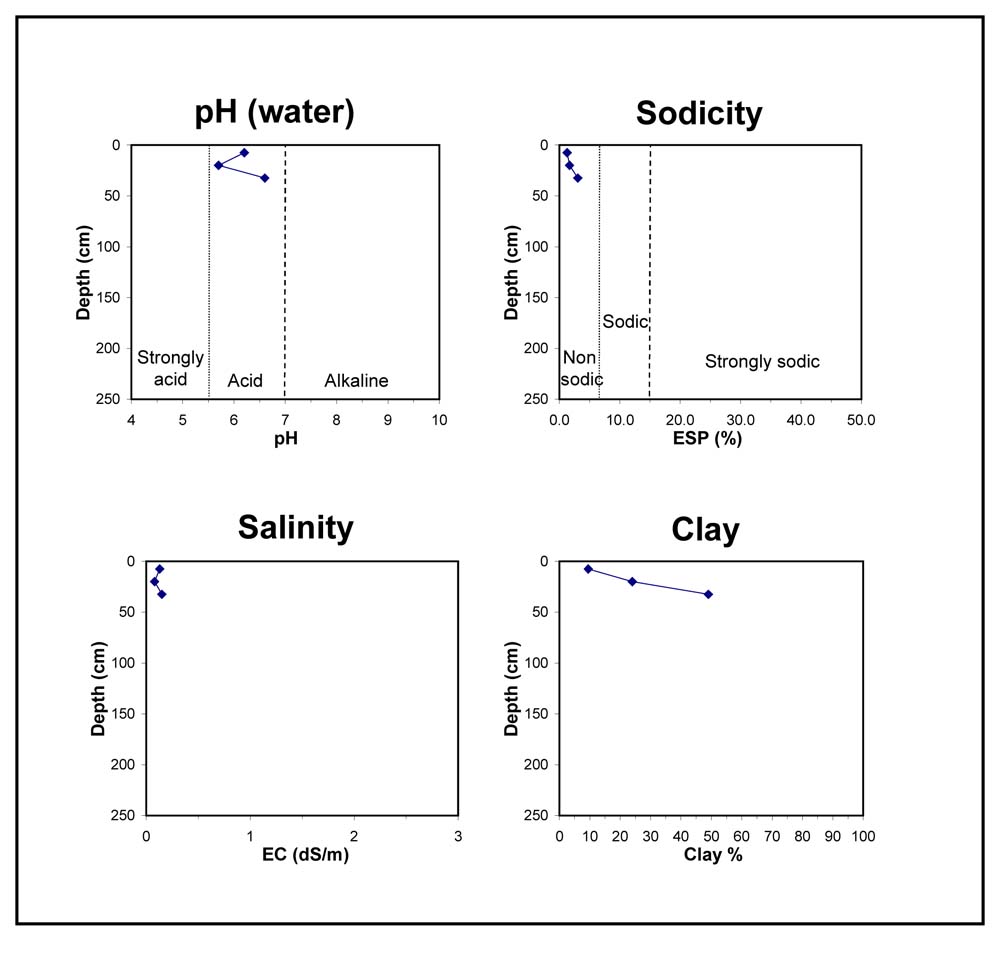GL167
| Site: GL167 | Land Unit: Ararat Granites |
| Aust. Soil Class.: Mottled, Eutrophic, Brown CHROMOSOL (confidence level 1) | |
 | General Land Unit Description: This land unit consists of granitic hills and rises around Ararat. Granitic tors are common on the crests and at the break of slope in some areas. Landslips are evident on the steeper slopes. This site is situated just off the crest of a low hill. The crest itself has a large amount of large granite tors. The soils are generally shallow (less than 50 cm deep) with a sharp transition to a deep weathered C horizon. Granite floaters may occur at varying depths. The subsoil structure is very prismatic and angular. The dominant soil type is a Grey Sodosol, often found on the lower slopes, (GL168, GL174). Chromosols are more likely to occur on the crests and steeper slopes. Due to the high amounts of rock outcrop at this site, it will have a lower land capability rating than GL168. |
Site Description:
| Slope: 5% | Geology: Ordovician granite |
| Landform pattern: Low hills | Position in landscape: Just off crest |
| Internal drainage: Well drained |
| A11 | 0-15 cm | Very dusky red (2.5YR2.5/2) loamy coarse sand, weak subangular blocky structure (5-10 mm), very weak consistence, many small subrounded quartz pebbles (2-6 mm), pH 6.2. Gradual transition to: |  |
| A12 | 15-25 cm | Reddish brown (5YR4/4) loamy coarse sand, many medium prominent dark yellowish brown (10YR3/6) mottles, weak subangular blocky structure (10-20 mm), many small subrounded quartz pebbles (2-6 mm), pH 5.7. Abrupt transition to: | |
| Subsoil | |||
| B2 | 25-40 cm | Reddish brown (2.5YR5/3), medium heavy clay, many prominent medium dark yellowish brown (10YR3/6) mottles, strong prismatic (20-50 mm) parting to strong angular blocky (10-20 mm) structure, many distinct clay skins present, pH 6.6. Clear and wavy transition to: | |
| C | 40-120+ cm | Weathered granite |
Key profile features:
- Shallow soil profile
- Mottled subsoil
- Many coarse fragments above B horizon
- Subsoil dispersive when worked when wet



